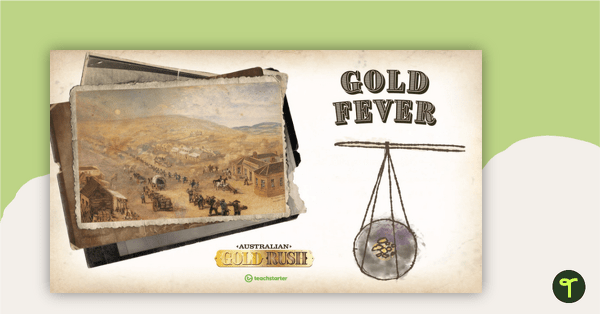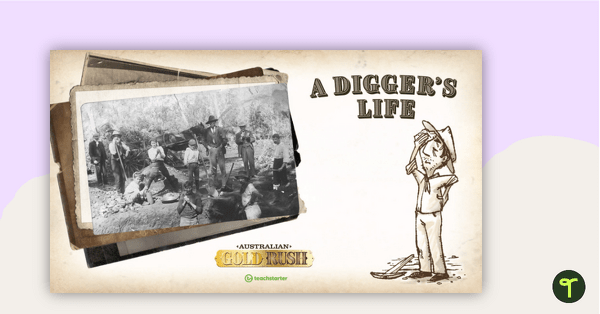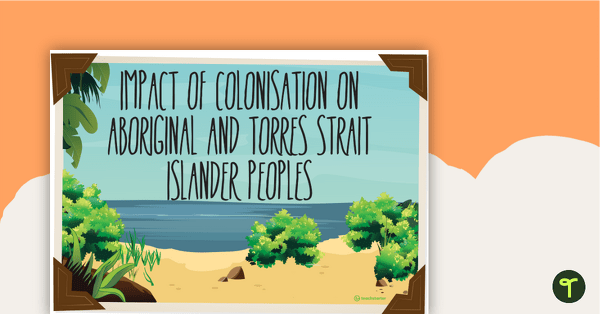Year 5
Australian communities - their past, present and possible futures
The Year 5 curriculum focuses on colonial Australia in the 1800s and the social, economic, political and environmental causes and effects of Australia's development, and on the relationship between humans and their environment. Students' geographical knowledge of Australia and the the world is expanded as they explore the continents of Europe and North America, and study Australia's colonisation, migration and democracy in the 1800s. Students investigate how the characteristics of environments are influenced by humans in different times and places, as they seek resources, settle in new places and manage the spaces within them. They also investigate how environments influence the characteristics of places where humans live and human activity in those places. Students explore how communities, past and present, have worked together based on shared beliefs and values. The curriculum introduces studies about Australia's democratic values, its electoral system and law enforcement. In studying human desire and need for resources, students make connections to economics and business concepts around decisions and choices, gaining opportunities to consider their own and others' financial, economic, environmental and social responsibilities and decision-making, past, present and future.
The content provides opportunities for students to develop humanities and social sciences understanding through key concepts including significance; continuity and change; cause and effect; place and space; interconnections; roles, rights and responsibilities; and perspectives and action. These concepts may provide a focus for inquiries and be investigated across sub-strands or within a particular sub-strand context.
The content at this year level is organised into two strands: knowledge and understanding, and inquiry and skills. The knowledge and understanding strand draws from four sub-strands: history, geography, civics and citizenship and economics and business. These strands (knowledge and understanding, and inquiry and skills) are interrelated and have been developed to be taught in an integrated way, which may include integrating with content from the sub-strands and from other learning areas, and in ways that are appropriate to specific local contexts. The order and detail in which they are taught are programming decisions.
Inquiry Questions
A framework for developing students' knowledge, understanding and skills is provided by inquiry questions. The following inquiry questions allow for connections to be made across the sub-strands and may be used or adapted to suit local contexts: inquiry questions are also provided for each sub-strand that may enable connections within the humanities and social sciences learning area or across other learning areas.
- How have individuals and groups in the past and present contributed to the development of Australia?
- What is the relationship between environments and my roles as a consumer and citizen?
- How have people enacted their values and perceptions about their community, other people and places, past and present?
(source: www.australiancurriculum.edu.au)
Achievement Standard
By the end of Year 5, students describe the significance of people and events/developments in bringing about change. They identify the causes and effects of change on particular communities and describe aspects of the past that have remained the same. They describe the experiences of different people in the past. Students explain the characteristics of places in different locations at local to national scales. They identify and describe the interconnections between people and the human and environmental characteristics of places, and between components of environments. They identify the effects of these interconnections on the characteristics of places and environments. Students identify the importance of values and processes to Australia's democracy and describe the roles of different people in Australia's legal system. They recognise that choices need to be made when allocating resources. They describe factors that influence their choices as consumers and identify strategies that can be used to inform these choices. They describe different views on how to respond to an issue or challenge.
Students develop questions for an investigation. They locate and collect data and information from a range of sources to answer inquiry questions. They examine sources to determine their purpose and to identify different viewpoints. They interpret data to identify and describe distributions, simple patterns and trends, and to infer relationships, and suggest conclusions based on evidence. Students sequence information about events, the lives of individuals and selected phenomena in chronological order using timelines. They sort, record and represent data in different formats, including large-scale and small-scale maps, using basic conventions. They work with others to generate alternative responses to an issue or challenge and reflect on their learning to independently propose action, describing the possible effects of their proposed action. They present their ideas, findings and conclusions in a range of communication forms using discipline-specific terms and appropriate conventions.
(source: www.australiancurriculum.edu.au)
Achievement Standard
By the end of Year 5, students describe the significance of people and events/developments in bringing about change. They identify the causes and effects of change on particular communities and describe aspects of the past that have remained the same. They describe the experiences of different people in the past.
Students sequence information about events and the lives of individuals in chronological order using timelines. When researching, students develop questions for a historical inquiry. They identify a range of sources and locate, collect and organise information related to this inquiry. They analyse sources to determine their origin and purpose and to identify different viewpoints. Students develop, organise and present their texts, particularly narrative recounts and descriptions, using historical terms and concepts.
(source: www.australiancurriculum.edu.au)
Achievement Standard
By the end of Year 5, students describe the location of selected countries in relative terms. They explain the characteristics of places in different locations at local to national scales. They identify and describe the interconnections between people and the human and environmental characteristics of places, and between components of environments. They identify the effects of these interconnections on the characteristics of places and environments. They identify and describe different possible responses to a geographical challenge.
Students develop appropriate geographical questions for an investigation. They locate, collect and organise data and information from a range of sources to answer inquiry questions. They represent data and the location of places and their characteristics in graphic forms, including large-scale and small-scale maps that use the cartographic conventions of border, scale, legend, title and north point. They describe the location of places and their characteristics using compass direction and distance. Students interpret maps, geographical data and other information to identify and describe spatial distributions, simple patterns and trends, and suggest conclusions. They present findings and ideas using geographical terminology in a range of communication forms. They propose action in response to a geographical challenge and identify the possible effects of their proposed action.
(source: www.australiancurriculum.edu.au)
Achievement Standard
By the end of Year 5, students identify the importance of values and processes to Australia's democracy and describe the roles of different people in Australia's legal system. They identify various ways people can participate effectively in groups to achieve shared goals and describe different views on how to respond to a current issue or challenge.
Students develop questions for an investigation about the society in which they live. They locate and collect information from different sources to answer these questions. They examine sources to determine their purpose and identify different viewpoints. They interpret information to suggest conclusions based on evidence. Students identify possible solutions to an issue as part of a plan for action and reflect on how they work together. They present their ideas, conclusions and viewpoints in a range of communication forms using civics and citizenship terms and concepts.
(source: www.australiancurriculum.edu.au)
Achievement Standard
By the end of Year 5, students distinguish between needs and wants and recognise that choices need to be made when allocating resources. They describe factors that influence their choices as consumers. Students identify individual strategies that can be used to make informed consumer and financial choices.
Students develop questions for an investigation about an economics or business issue or event. They locate and collect data and information from a range of sources to answer these questions. They examine sources to determine their purpose and suggest conclusions based on evidence. They interpret, sort and represent data in different formats. They generate alternative responses to an issue or challenge and reflect on their learning to propose action, describing the possible effects of their decision. Students apply economics and business skills to everyday problems. They present their ideas, findings and conclusions in a range of communication forms using economics and business terms.
(source: www.australiancurriculum.edu.au)
- Free Plan

Blank Map of Australia - Template
Record and represent data about the location of significant places with this printable blank map of the continent of Australia.
- Plus Plan

The World's Continents and Oceans – Teaching Presentation
Explore the seven continents and five oceans of the world with this comprehensive teaching presentation.
- Plus Plan

Australian Gold Rush: Gold Fever – Teaching Presentation
A teaching presentation that explores the origins of the Australian Gold Rush.
- Plus Plan

World Mapping Workbook
Develop mapping skills by plotting key features and locations onto a map of the world.
- Plus Plan

Australian History Pop Quiz – Teaching Presentation
A teaching presentation that serves as a pop quiz to explore students' knowledge of Australian history and the culture we see today.
- Plus Plan

The Establishment of Australia's Colonies PowerPoint
A 32 slide editable PowerPoint to use in the classroom when learning about the establishment of British colonies in Australia.
- Plus Plan

Australian Gold Rush: A Digger's Life – Teaching Presentation
A 17-slide teaching presentation that explores the challenges, hardships and glory of a life spent digging on the Australian goldfields.
- Plus Plan

Australian Gold Rush: That's Gold! – Teaching Presentation
A 13-slide teaching presentation that includes interesting facts about gold, why it is such a prized metal, and how its use shaped modern currency and trade.
- Plus Plan

Impacts of Colonisation on Aboriginal and Torres Strait Islander peoples Posters
Posters highlighting the main impacts of colonisation on Aboriginal and Torres Strait Islander peoples.
- Plus Plan

Australian Gold Rush: Eureka Stockade – Teaching Presentation
A 16-slide teaching presentation about the events leading up to and including the Eureka Stockade and the positive and negative impacts it had on Australian politics and people.
- Free Plan

Australian Gold Rush: Map Where It's At - Worksheet
A fun mapping activity for students to pinpoint gold finds and gold rush locations between 1851 to 1893 on a map of Australia.
- Free Plan

National Tree Day Activity Pack
Celebrating National Tree Day with a pack of exciting activities!
- Free Plan

Significant First Nations Australians - Inquiry Task
An inquiry research task to use in the classroom during NAIDOC Week.
- Plus Plan

Biography Timeline Template
Use this multipurpose timeline template for a variety of assignments, projects, and more!
- Free Plan

Natural Disaster Word Wall Vocabulary
Use this teacher-created resource to explore natural disaster vocabulary with your primary school students.
- Free Plan

Australian Gold Rush: Advent Calendar
An advent calendar style poster for students to identify, inquire about and collect information that relates to the Australian Gold Rush.
- Plus Plan

British Colonies in Australia - History Word Wall Vocabulary
45 British Colonisation in Australia related vocabulary cards.
- Plus Plan

Australian Gold Rush: Living Wax Museum – Project
An inquiry project in which students research personalities from the Australian Gold Rush and portray them as part of a Living Wax Museum.
- Plus Plan

Problems in the Australian Colonies PowerPoint
A 19 slide editable PowerPoint to use in the classroom when learning about the problems that took place in the colonies of Australia.
- Plus Plan

Australian Habitat Preservation – Inquiry-Based Project
Use this habitat preservation project to teach your students about how to help conserve a threatened Australian environment for future generations.
- Free Plan

Biography Brochure Template
A brochure template to use when writing biographies.
- Plus Plan

Australian Gold Rush: Race to Eureka – Game
An interactive gold-panning game in which students explore scenarios of reward, penalisation and inequality.
- Plus Plan

A Polling Predicament! Escape Room Game
Discover the secret code needed to open a locked ballot box on Election Day with this exciting escape-room-style game!
- Plus Plan

Natural Disaster Posters - Information
Posters with pictures and information for eight different types of natural disasters.
- Plus Plan

Species Survival Scenario Task Cards
Explore how to save endangered species during National Science Week 2024 with this set of 16 species survival scenario cards.
- Free Plan

Natural Disasters - Illustrated Vocabulary Display
Reinforce science vocabulary in your classroom with this set of illustrated and annotated natural disaster word wall cards.
- Plus Plan

NAIDOC Week 2022 Find-a-Word – Lower Years
A lower-years find-a-word puzzle emphasising topic words from information sheet about the NAIDOC 2022 theme: “Get Up! Stand Up! Show Up!”
- Plus Plan

Australian Gold Rush: A Golden Democracy – Teaching Presentation
A 13-slide teaching presentation about the political struggles gold miners faced in their efforts to obtain wealth.
- Plus Plan

What are Bushfires? Cloze Worksheet
A cloze worksheet about bushfires.
- Plus Plan

My Personal Timeline - Project Template
Apply knowledge of chronological order while students create a personal timeline highlighting important milestones.
- Plus Plan

Why Teach About Dreaming Stories? Poster
An educational poster providing a rationale for teaching Australian children about Dreaming stories.
- Free Plan

Australian Gold Mines: Y-Chart – Template
A Y-chart template students can use to reflect on what working on the goldfields looked like, sounded like and felt like.